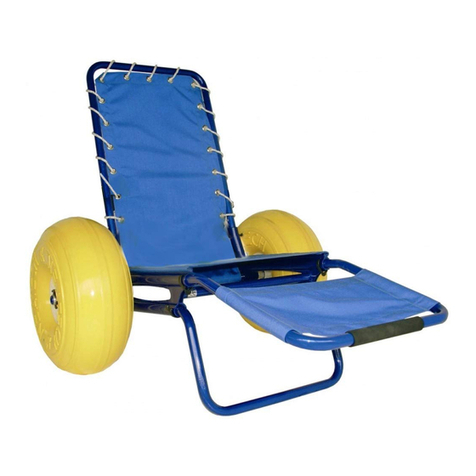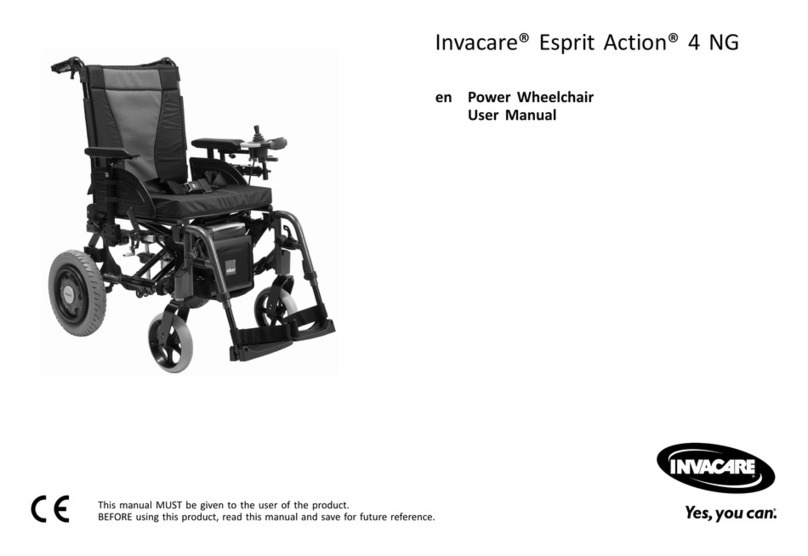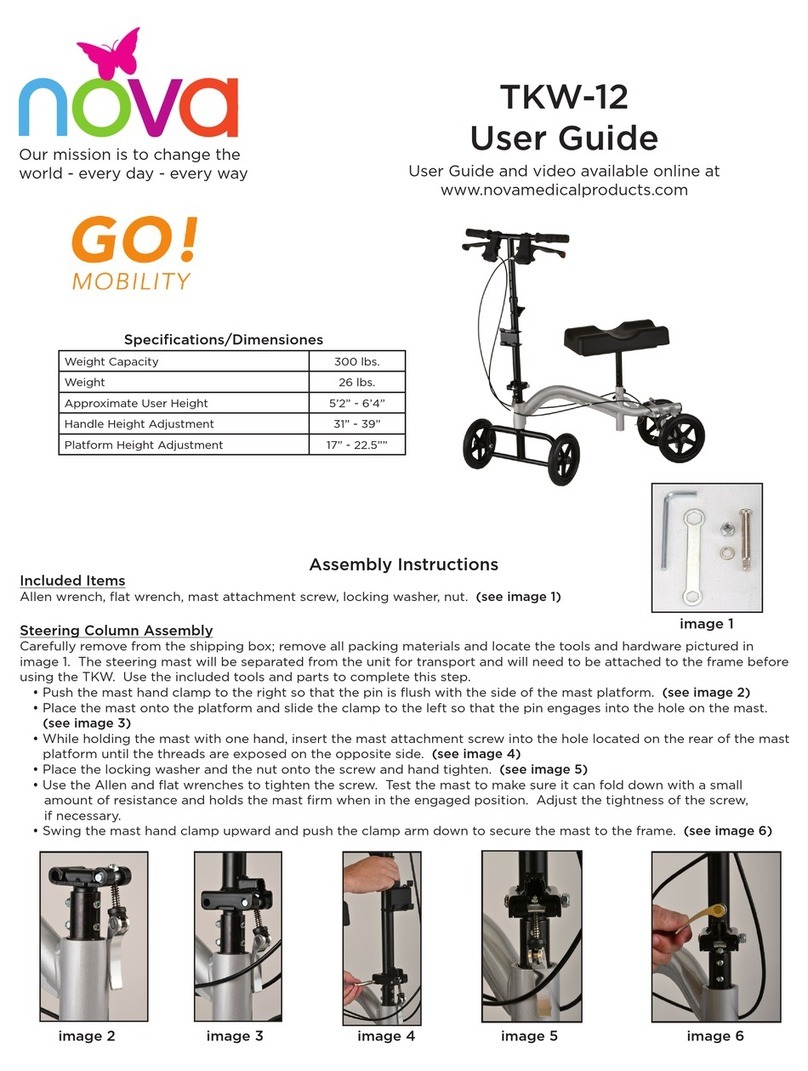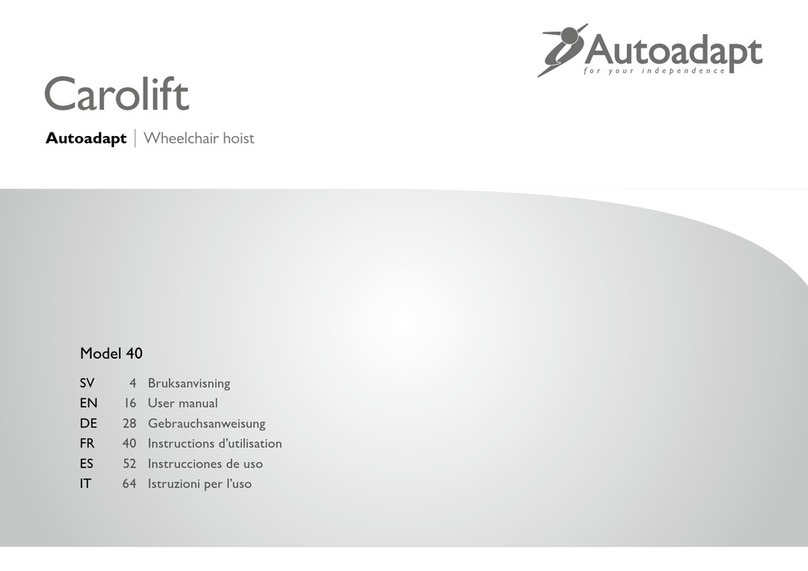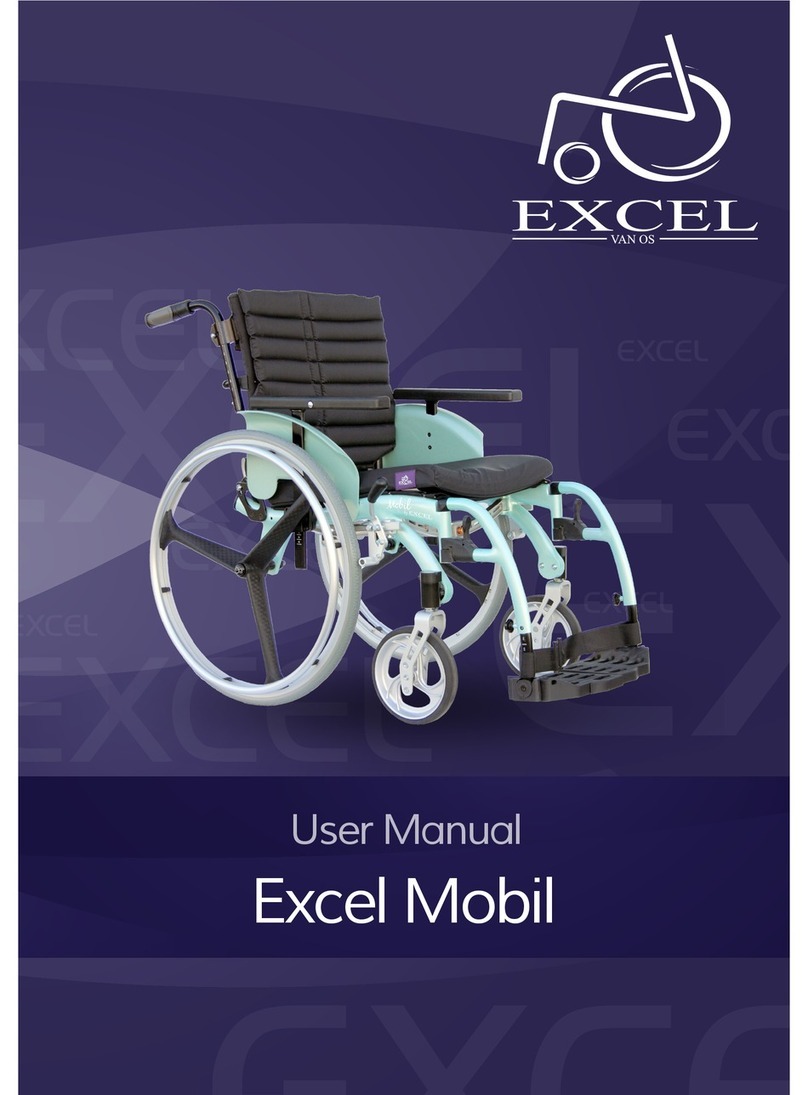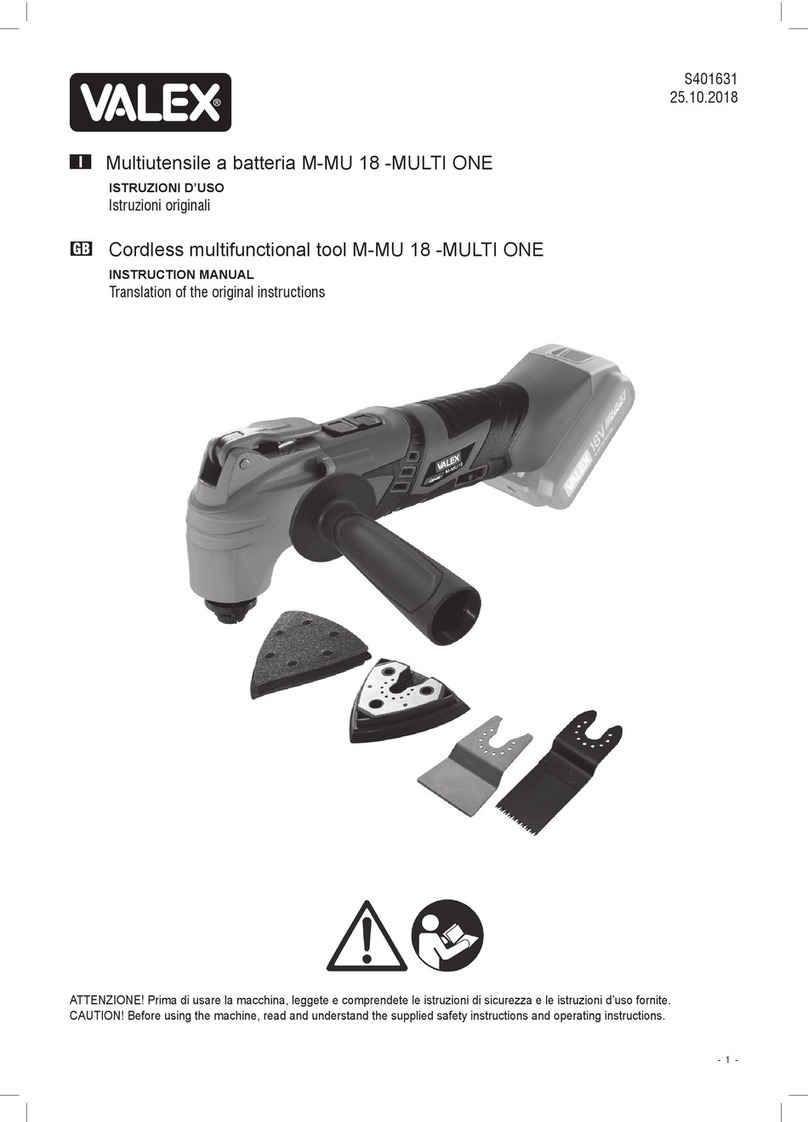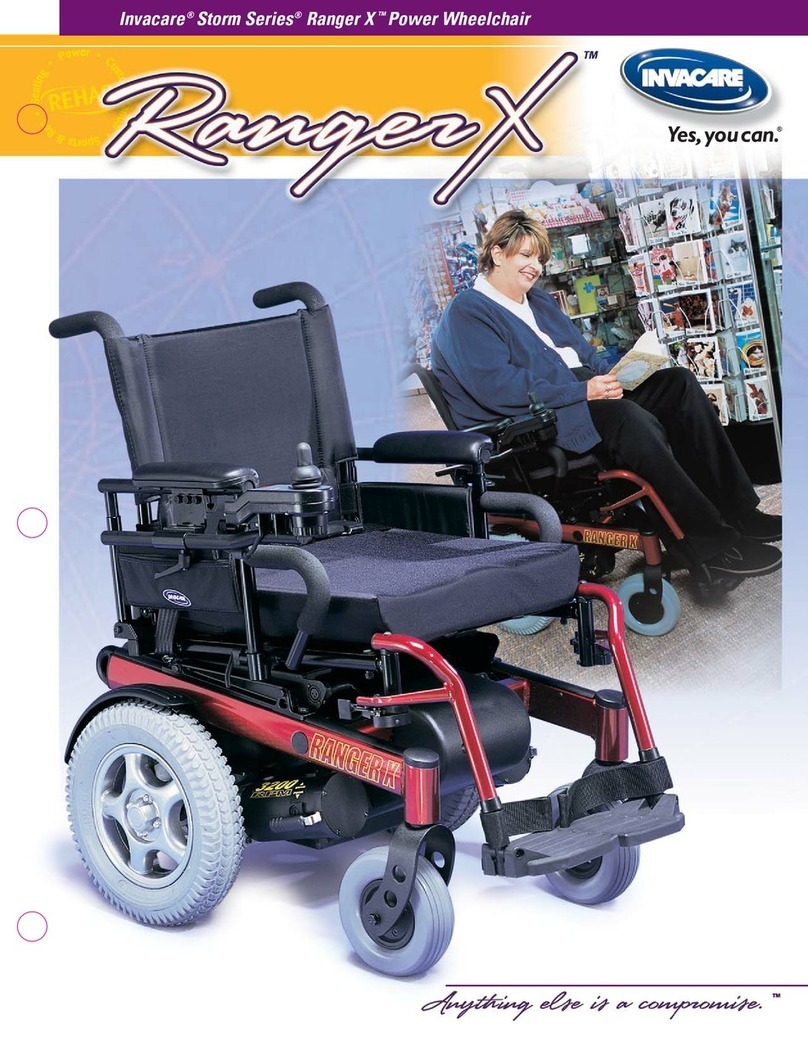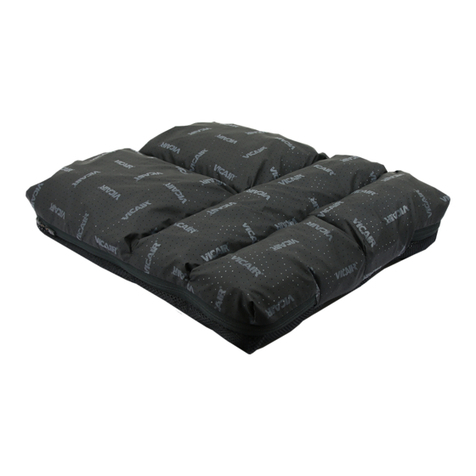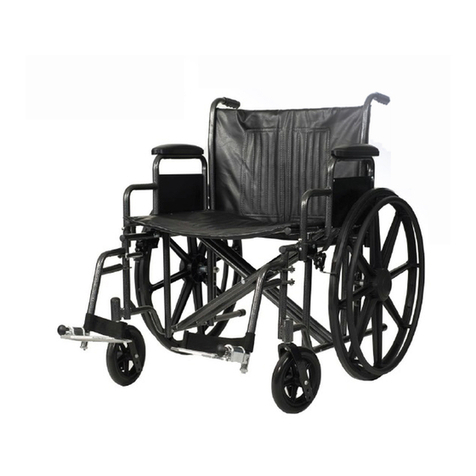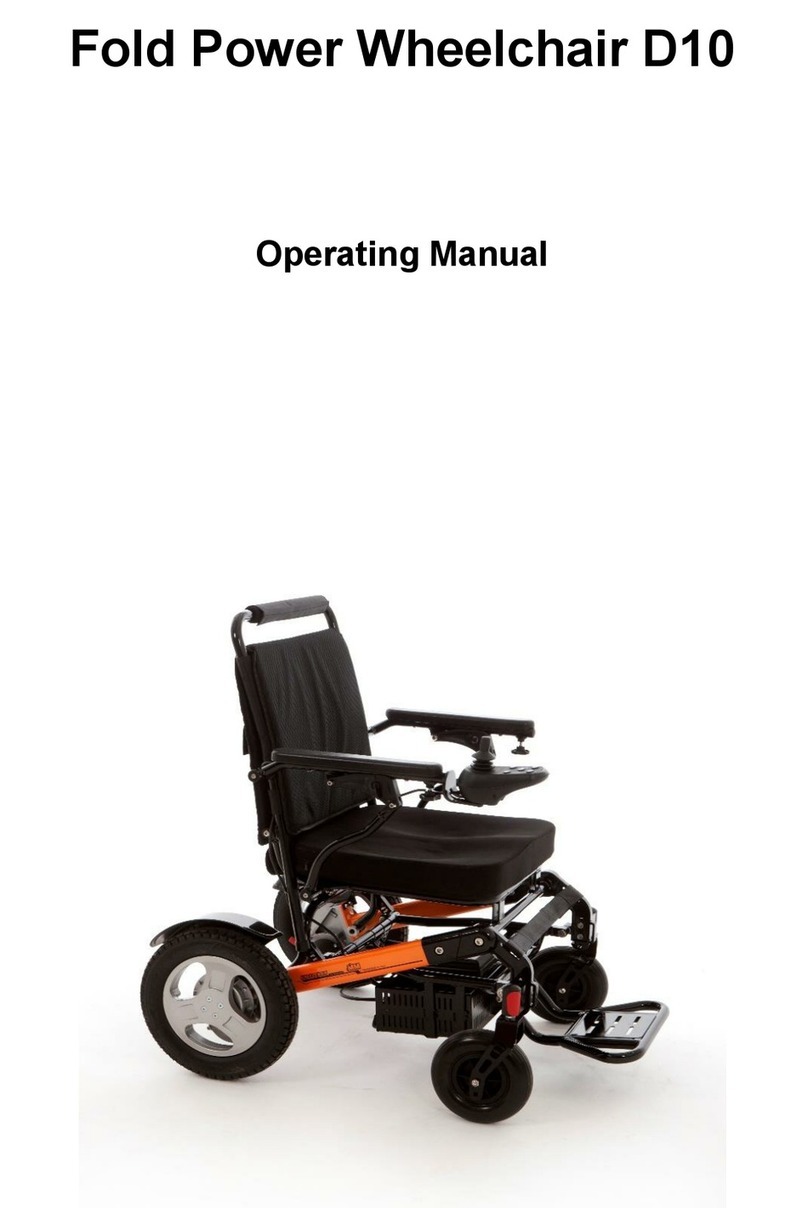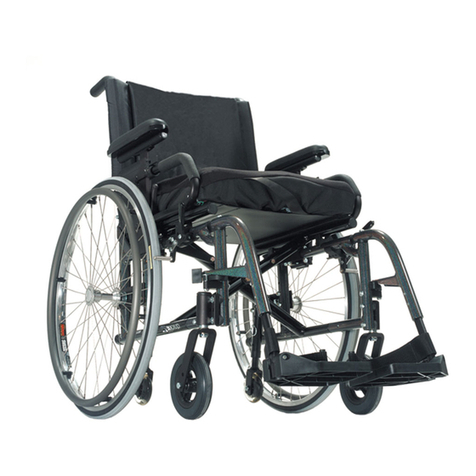Medicare Technology Steel Wheelchair User guide

Steel Wheelchair Owners Manual Page 1 of 12 Part Code: Z11999
Steel Wheelchair
Owner’s Handbook
Please read this manual before
operation for maintenance instructions
and safe usage of this wheelchair.
Steel Wheelchair Owners Manual Page 2 of 12 Part Code: Z11999
Contents
1. Introduction
2. Parts Description
3. Legrest Adjustment
4. Folding the Wheelchair
5. Transporting the Wheelchair
6. Using the Stepper Pad
7. Using a Lap Belt
8. Brake Adjustment and Operation
9. Operation and Propulsion
10. Tyre Pressure
11. Care and Maintenance
12. Specification
13. Warranty
Introduction
This steel wheelchair is designed for use indoors, and
outdoors in some circumstances. The wheelchair is designed
for a single user of up to 115kg (18 stones). The wheelchair is
available with 24” rear wheels with handrims or 12½” transit
wheels. The wheelchair can be moved in all directions, and is
manually propelled by the wheelchair user and/or a carer.
The wheelchair is manufactured by Medicare Technology.
All Medicare Technology wheelchairs are manufactured to
the highest quality and are CE compliant. Medicare
Technology is an ISO 9001 and ISO 13845 certified medical
device manufacturer.
Steel Wheelchair Owners Manual Page 3 of 12 Part Code: Z11999
Manufacturer Details:
Medicare Technology Ltd,
Ainley’s Industrial Estate,
Elland, West Yorkshire HX5 9JP.
Tel: 01422 314488
Web: www.medicaretechnology.com
Parts Description
The model shown above features 24” self-propel rear wheels
with handrims. A version with 12½” transit wheels is
available.
Steel Wheelchair Owners Manual Page 4 of 12 Part Code: Z11999
Legrest Adjustment
13
2
Note: Always ensure the
bolt is sufficiently
tightened after adjustment.
For optimum comfort it is
important to attain the correct
leg position. The footrests
have been designed so that
they can be extended into a
number of fixed positions. To
do this, release the bolt using
the spanner (see diagram)
and turning clockwise (1).
Then adjust the footplate to
lengthen or shorten the
legrest (2). Finally, tighten the
bolt by using the spanner and
turning anticlockwise (3).
Folding the Wheelchair
The wheelchair has been designed with an easy fold
mechanism. To fold the chair, ensure that the footrests are in
the forward position and that the plastic footplates are flipped
up. Holding the front and rear edge of the seat sling, pull the
seat in an upward motion. The wheelchair will naturally fold up.

Steel Wheelchair Owners Manual Page 5 of 12 Part Code: Z11999
Transporting the Wheelchai
r
To transport the wheelchair, first fold up the wheelchair as
previously described. Then remove the legrests by pushing
the chrome lever on the legrests whilst pulling the legrest
away from the chair. This operation should unlock the legrest
and allow it to be removed by lifting up on the legrest.
Using the Stepper Pad
Use the stepper pad to raise the front castors (when
mounting a kerb for example). To use, push down on the
rubber stepper pad with a foot.
Warning:
Do not raise the front castors by pushing down
on the push handles as this could result in
damage to the wheelchair.
To mount a kerb. Approach the kerb head on. Then the
attendant uses the stepper pad to raise the front castors, and
lowers the front castors on the raised kerb. Finally the
attendant should push the wheelchair forward, lifting it up
slightly to mount the kerb if required.
To go down a kerb. Line up the front castors with the edge
of the kerb. The attendant uses the stepper pad to raise the
front castors and tip the user slightly back. Keeping the
castors raised, slowly lower the wheelchair down the kerb.
Steel Wheelchair Owners Manual Page 6 of 12 Part Code: Z11999
Using a Lap Belt
Most lap belts can be retrofitted to the wheelchair. The lap
belt should be routed around the back of the two back posts
of the wheelchair. The lap belt needs to be secured to the
back post and prevented from moving up or down the back
post, as this can be hazardous to the user.
Secure the lap belt by unscrewing the back canvas and
installing the lap belt in between the back posts and the back
canvas. For safety, it is not recommended that the lap belt is
installed any more than 10cm (4”) higher than the seat
canvas.
There is a risk of suffocation from users ‘submarining’ (where
they slide down the chair until the lap belt is around the neck
area). To reduce the risk of this, ensure that the lap belt is
used under supervision and is used as instructed.
A lap belt may not be suitable for all users of wheelchairs.
Seek professional medical advice before using the lap belt.
The above instructions only provide a guideline for lap belt
installation. Please refer to the documentation supplied with
the lap belt for full installation and operation instructions.
Steel Wheelchair Owners Manual Page 7 of 12 Part Code: Z11999
Brake Adjustment and Operation
To apply the parking brakes,
push the plastic brake handle
towards the front of the
wheelchair. Push the handle
back to release the brakes.
Adjustment is made to the
brake by loosening the Allen
key bolt head (black arrow)
using the Allen key supplied,
and then by sliding the brake
unit along the frame. Once
adjusted, retighten the bolt.
The brakes are preset, and adjustment should
only be necessary if the brakes become loose
or no longer function correctly.
Steel Wheelchair Owners Manual Page 8 of 12 Part Code: Z11999
Operation and Propulsion
Before Using the Wheelchair read the safety
notices below:
•Use slow speeds on gradients. Do not
exceed the maximum gradient stated.
•The wheelchair is only suitable for single
occupancy.
•Keep your feet on the footplates when
moving. Do not stand on the footplates.
•Do not use escalators.
•Do not reverse down a gradient
•Maintain proper balance at all times. Users
should not move their centre of gravity out
of the seating area.
•Do not reach for items further than your
arm will extend.
•Be aware of hazards in your environment,
such as narrow doorways, steps,
household appliances, children’s toys, etc.
•We recommend you consult your
healthcare professional for advice about
transferring to and from the wheelchair.
The parking brakes should always be
applied when transferring.
•The wheelchair brakes are not suitable for
slowing the wheelchair down.

Steel Wheelchair Owners Manual Page 9 of 12 Part Code: Z11999
•Propulsion
•The wheelchair can be manually propelled by either the
wheelchair user or an attendant.
•If an attendant is propelling the wheelchair, they should
push using the push handles.
•If the user is propelling the wheelchair, they should use
the handrims attached to the rear wheels. The user can
slow the wheelchair by applying pressure to the handrim
using their hands. The wheelchair should not be user
propelled in scenarios where the user cannot stop the
wheelchair promptly and comfortably.
Tyre Pressure and Inflation
The tyres should be inflated with a manually operated pump
and use a standard car tyre air valve (Schrader valve). Note
that under no circumstances should a powered or
compressed air pump be used. The tyres should be inflated
for optimum user comfort and wheelchair ease of use.
However, do not exceed the maximum pressure stated on the
side wall of the tyre. This may differ slightly between tyres,
but is typically 55psi (3.8bar) for 24” self propel wheels and
40psi (2.8bar) for 12½” transit wheels.
Always refer to the maximum pressure stated on the tyre
Steel Wheelchair Owners Manual Page 10 of 12 Part Code: Z11999
Care and Maintenance
•Before each use of the wheelchair, the brakes and tyre
pressures should be checked.
•The wheelchair should be stored in a dry environment,
away from direct sunlight. When in storage the wheelchair
can be folded up
•The wheelchair should be kept clean and dust free. This
can be done with a duster or damp cloth.
•The wheelchair comes with a toolkit to perform simple
maintenance tasks and most common adjustments.
•The user should routinely check the following items. It is
recommended that a Medicare Technology dealer
services the wheelchair annually, where these items
should be repaired, replaced, adjusted and/or lubricated if
required:
•
Tyre pressure
•Tyre wear
•Wheel bearings
•Castors
•Brakes
•Legrest locking mechanism
•Seat upholstery
•Back upholstery
•Arm pads
•Back posts
•Wheelchair (folds up)
Steel Wheelchair Owners Manual Page 11 of 12 Part Code: Z11999
Specification
Model Steel Wheelchair (self propel)
Dimensions *1
(L x W x H)
106 x 61 x 90cm
41¾” x 24” x 35½”
Dimensions *2
(L x W x H)
79 x 26 x 90cm
31” x 10¼” x 35½”
Seat Dimension
(W x D x H)
40 x 47 x 49cm
15¾” x 18½” x 19¼”
Wheel Spacing: 43cm / 17”
Weight *1 17.9kg / 39.4lb
Weight *2 15.2kg / 33.4lb
Max User Mass (weight capacity): 115kg / 18 stone
All dimensions are based on the wheelchair in its default
configuration. The above dimensions are for the 24” rear
wheel version. The dimensions for the 12½” transit rear
wheel version may differ.
Dimensions *1 and Weight *1 refers the wheelchair
assembled. Dimensions *2 and Weight *2 refers to the wheelchair
folded and leg rests removed
Warning:
Do not exceed the weight capacity stated above.
Failure to do so could result in damage or injury.
Steel Wheelchair Owners Manual Page 12 of 12 Part Code: Z11999
Warranty
There is a comprehensive twelve-month warranty from the date on which your new wheelchair
is delivered. The warranty covers the wheelchair for repairs or replacement during this period.
For more detail, please see the warranty conditions overleaf:
1. Any work or replacement part installation must be carried out by an authorised
Medicare Technology dealer / service agent.
2. To apply the warranty should your wheelchair require attention please contact the outlet
from which you purchased the wheelchair.
3. Should any part of the wheelchair require repair or full or part replacement, as a result
of a manufacturing or material defect within the warranty period, parts will be supplied
free of charge. Note: The guarantee is not transferable.
4. Any repaired or replaced parts will be covered by the balance of the warranty period on
the wheelchair.
5. Parts replaced after the original warranty has expired will be covered by a three-month
warranty.
6. Consumable items supplied will not generally be covered during the normal warranty
period unless such items require repair or replacement clearly as a direct result of a
manufacturing or material defect. Such items include (among others): upholstery and
tyres.
7. The above warranty conditions apply to brand new wheelchairs. Second-hand
wheelchairs supplied directly by Medicare Technology carry a six-month warranty
period. If you are unsure whether your wheelchair is covered contact your dealer.
8. Under normal circumstances, no responsibility will be accepted where the wheelchair
has required assistance as a direct result of:
a. the wheelchair part not having been maintained in accordance with the
manufacturers recommendations
b. failure to use the manufacturer’s specified parts
c. the wheelchair or part having been damaged due to neglect, accident or improper
use
d. the wheelchair or part having been altered from the manufacturer’s specification or
repairs having been attempted before the dealer is notified
In the event of your wheelchair requiring attention, please contact your service agent / dealer
and give all relevant details so they can act quickly.
The manufacturer reserves the right to alter without notice any weights, measurements or
other technical data shown in this manual. All figures, measurements and capacities shown in
this manual are approximate and do not constitute specifications.
Other Medicare Technology Wheelchair manuals



